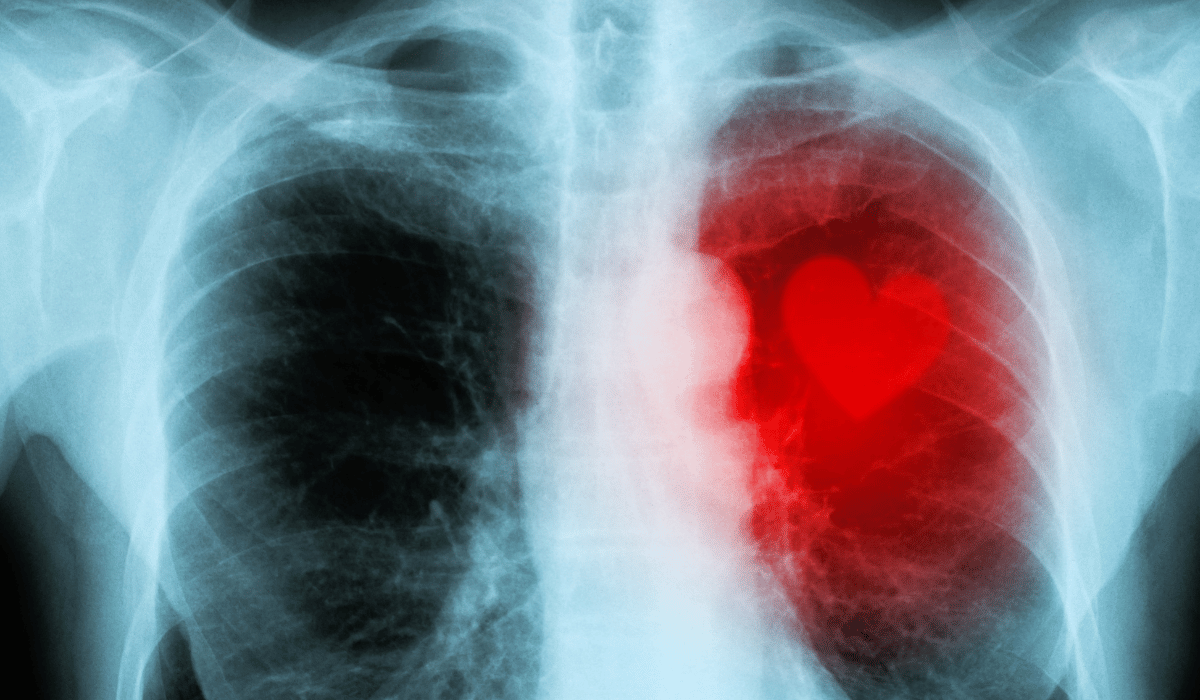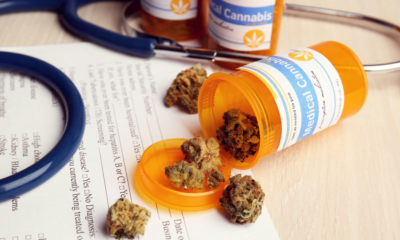As the world of Medical Cannabis continues to unfold, shedding light on its diverse therapeutic applications, there’s one area that deserves a closer look – cardiovascular diseases.
In this article, we explore the pages of The Handbook Principle of Cannabinology by Viola Brugnatelli and Fabio Turco, to extract insights on how Medical Cannabis may play a role in addressing cardiovascular issues.
The need for new treatments
Cardiovascular diseases remain a global health concern, with millions of lives affected each year. While conventional treatments have made significant strides, there’s an emerging need for novel approaches. Medical Cannabis, with its complex interaction with the endocannabinoid system, offers an avenue worth exploring.
What we know so far
The Endocannabinoid System, known for its widespread influence on various physiological functions, also extends its reach to the cardiovascular system. Key parameters like blood pressure, vasomotor control, cardiac contractility, vascular inflammation, and angiogenesis are intricately regulated by cannabinoids.
Changes in endocannabinoid levels in circulation, as well as alterations in cannabinoid receptor expression within blood vessels, have been observed in various pathological conditions such as obesity, diabetes, advanced liver cirrhosis, cardiotoxicity, cardiovascular shock, atherosclerosis, and hypertension.
CB1 receptors are found in various vascular regions, including the aorta and mesenteric artery, predominantly within endothelial and muscle cells. Activation of CB1 receptors, either through peripheral or central actions, results in vasodilation and a consequent decrease in blood pressure, although some studies have shown contractile effects, underlining the intricate pharmacology of cannabinoids in cardiovascular contexts. CB1 receptors are also present in the heart, particularly in cardiomyocytes, where their stimulation generally decreases cardiac contractility.
Additionally, CB2 receptors, located in the myocardium and at the vascular level, play a role in the cardiovascular system, albeit their precise function remains unclear. These receptors are also expressed in immune cells within the cardiovascular system, such as leukocytes and macrophages. Activation of CB2 receptors suppresses the release of inflammatory mediators, including cytokines and chemokines, thus dampening the inflammatory response that drives atherosclerosis and ischemia-reperfusion injuries.
Endocannabinoids like anandamide and 2-arachidonoylglycerol (2-AG), along with their synthesis and degradation systems, are present in both the vascular and cardiac domains. These compounds primarily induce vasodilation and reduce vascular pressure and cardiac contractility.
Based on the data we have so far, the Endocannabinoid System appears to have a limited role in regulating cardiovascular parameters under normal physiological conditions, aligning with its main function of maintaining bodily balance (homeostasis). However, in various pathological situations where homeostasis is disrupted, the system can become overactive, exerting both protective and detrimental effects, depending on the specific cardiovascular circumstances.
READ MORE: Alzheimer’s and medical cannabis: a new hope for patients?
Hypertension
The activation of the Endocannabinoid System appears to have a compensatory role in hypertension. It can counteract both increased blood pressure and cardiac contractility through the activation of CB1 receptors. In hypertensive laboratory animals, inhibiting the degradation of endogenous anandamide results in elevated cardiac anandamide levels, ultimately leading to a decrease in both blood pressure and cardiac contractility. This suggests that targeting the FAAH enzyme through pharmacological blockade could hold promise as a valuable therapeutic strategy for individuals with hypertension.
Atherosclerosis
Atherosclerosis, characterized by the buildup of substances in arterial walls, has drawn attention from researchers exploring cannabinoid therapy. Studies show mixed results, with cannabinoids influencing smooth muscle cell migration. However, selective activation of CB2 receptors may hold therapeutic potential, potentially mitigating inflammatory responses in the vasculature.
Ischemic-reperfusion damage and infarction
When a blood vessel becomes obstructed due to a thrombus or an embolus, it results in reduced or completely cut-off circulation. This leads to a shortage of vital nutrients and oxygen supply to cells, resulting in a condition known as ischemia. Interestingly, when reperfusion, the restoration of blood flow, is achieved promptly following ischemia, it can exacerbate the damage. This phenomenon is known as reperfusion injury. In this scenario, the tissues affected by ischemia are recognized as foreign by the innate immune system, triggering a robust inflammatory response.
Several studies indicate that endocannabinoids may play a protective role in myocardial ischemia and reperfusion injury. They seem to contribute to a phenomenon known as ischemic preconditioning, where a brief occlusion of a blood vessel before an ischemic event results in less severe reperfusion damage. This probable bioprotective mechanism of cannabinoids in this context appears to involve their action on the CB2 receptor, leading to a reduction in the inflammatory process and activation of endothelial cells due to ischemia.
Although further confirmation is required, it is conceivable that controlling endocannabinoid stimulation by targeting the CB2 receptor may offer a valuable therapeutic approach for ischemic-reperfusion injuries.
READ MORE: Multiple sclerosis and medical cannabis: a scientific exploration
Effects of cannabis smoking
Cannabis smoking’s effects on the cardiovascular system depend on factors like THC content, dosage, and individual response. Acute cannabis smoking can lead to tachycardia and hypertension, which diminish with chronic use. CBD, a non-psychotropic compound in cannabis, has shown hypotensive properties, potentially offering therapeutic benefits. Based on scientific research, smoking cannabis appears to present a negligible risk to individuals with minimal cardiovascular risk factors. However, it should be strongly discouraged for those with a history of heart disease. It’s essential to consider the potential intrinsic harm to not only the cardiovascular system but also other health aspects resulting from the irritants and carcinogens found in smoking, especially when combined with concurrent tobacco use.
Conclusions
Cannabinoids wield influence over crucial cardiovascular parameters, with effects more pronounced in pathological conditions. Selective cannabinoid modulation shows promise in conditions like myocardial infarction, atherosclerosis, and hypertension.
However, regardless of the purpose, whether medical or recreational, the use of cannabis should be discouraged or subject to careful evaluation in individuals with pre-existing heart conditions, especially if smoking is the chosen method of consumption. Smoking cannabis in individuals with heart disease elevates the risk of chest discomfort, and multiple studies indicate that the risk of heart attacks is heightened within the hour after cannabis use compared to the baseline risk. These effects are attributed to the intricate impact of cannabinoids on the cardiovascular system, which includes increased heart rate, blood vessel dilation, and reduced cardiac efficiency. Consequently, strenuous physical activity immediately following cannabis consumption should be avoided.
Furthermore, it’s worth noting that the most severe cardiovascular issues have been observed in recreational cannabis users, typically associated with prolonged and intensive use over an extended period.
On the other hand, patients receiving Medical Cannabis treatment should generally encounter no significant issues if they do not have concurrent cardiovascular conditions. However, regular monitoring of cardiac parameters is advisable in case of any potential alterations in the cardiovascular system.
Incorporating Medical Cannabis into cardiovascular care
As research in this field progresses, it’s essential for healthcare providers to stay informed about the potential benefits and risks of medical cannabis. The Handbook Principle of Cannabinology offers comprehensive insights into the science, regulations, and practical evidence related to medical cannabis in Europe. This resource is a valuable tool for those navigating the intersection of medical cannabis and cardiovascular health.
To better understand the intricate relationship between Medical Cannabis and cardiovascular health, consider exploring “The Handbook Principle of Cannabinology” by Viola Brugnatelli and Fabio Turco. This book provides a wealth of information for healthcare professionals, researchers, and anyone interested in the evolving landscape of Medical Cannabis.

 News6 months ago
News6 months ago
 Science5 months ago
Science5 months ago
 Industry6 months ago
Industry6 months ago
 News6 months ago
News6 months ago
 News5 months ago
News5 months ago
 Health5 months ago
Health5 months ago
 News5 months ago
News5 months ago
 Health3 months ago
Health3 months ago












